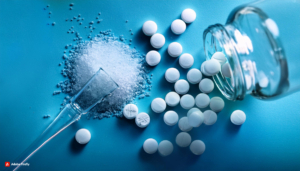How to improve the dissolution performance of rivaroxaban?
The dissolution performance of rivaroxaban was studied by E.A. Ozon et al. and was published elsewhere (DOI: 10.1016/j.heliyon.2024.e33162). Here is what it is about in short words:
Recent progress in the development of solid dosage forms using active ingredient-cyclodextrin complexes has gained significant interest in pharmaceutical research. Previous efforts largely focused on integrating these complexes in solid states, but issues with incomplete inclusion led to the exploration of new techniques. This study introduces an innovative method for incorporating liquid-state drug-cyclodextrin inclusion complexes into solid dosage forms.
The research specifically examined rivaroxaban, a hydrophobic drug with low water solubility. The drug was included in hydroxypropyl-β-cyclodextrin at a 1:1 molar ratio and kept in a liquid state. To improve viscosity, 2% w/w hydroxypropyl-cellulose was added, and the resulting mixture was sprayed onto cellulose pellets (CELLETS® 780) using a Mini Coater, i.e. by Glatt. The process was carefully controlled, with specific parameters for atomization air pressure and fluidizing airflow.
The coated cellets and raw materials were characterized using several analytical techniques, including Fourier Transform Infrared Spectroscopy (FTIR), X-ray diffraction (XRD), scanning electron microscopy (SEM), and differential scanning calorimetry (DSC). These analyses confirmed the successful incorporation of rivaroxaban into hydroxypropyl-β-cyclodextrin, with the final cellets showing excellent flowability, compressibility, and adequate hardness. Quantitative analysis via HPLC-DAD determined that the drug loading was 10 mg rivaroxaban per 750 mg of coated cellets.
In vitro dissolution studies were conducted in two different media: one replicating compendial conditions for 10 mg rivaroxaban tablets, and the other using a phosphate buffer without surfactants. The experimental capsules demonstrated release profiles comparable to the commercial product Xarelto® 10 mg, with improved dissolution rates in the first 10 minutes. This study represents a significant advance in creating solid dosage forms with liquid-state drug-cyclodextrin complexes, offering potential improvements in drug delivery and bioavailability.
Information on starter spheres
CELLETS® 780 are a special size of MCC spheres, with a particle size from 710 – 850 µm. Request a sample here.
Alternatives: CELLETS® 700, 710-1000 µm.



